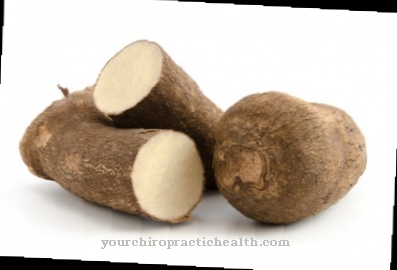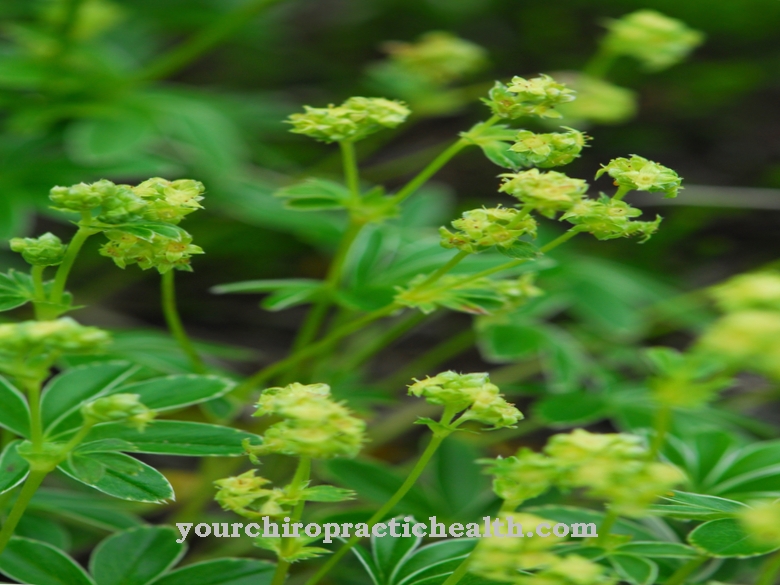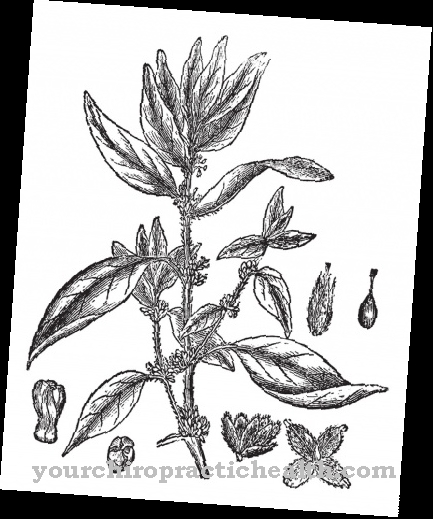Icelandic moss (Cetraria islandica) is a lichen whose growth gives it something of the appearance of a moss, which is probably where the misleading name comes from. It is traditionally used to relieve inflamed mucous membranes.
Occurrence and cultivation of Icelandic moss

Icelandic Moss is a very slowly growing lichen with a color varying from gray-white to brown-green and a height of 4 to 12 cm.
The flat shoots are branched like antlers and roll up slightly at the edges. The tough and elastic lichen grows in abundance in the mountain regions and low mountain ranges of Central and Northern Europe and is particularly characteristic of the Icelandic plains. Icelandic moss can be found in the tundra, but also in wooded locations and crevices, in the blazing sun or on barren soil. Almost all of it comes from wild collection.
Above all, clean air is required for optimal growth, which is why cultivation is very difficult in addition to the low growth rate. Due to the high radiation exposure as a result of the Chernobyl reactor accident, experts advise buying tested products from drugstores or pharmacies.
Application & use
Icelandic moss contains up to 70% lichen starch (water-soluble polysaccharides) from isolichenan and lichenan, which is nutritious and easy to digest. In addition, the plant contains weakly antibiotic lichen acids such as fumaric acid or usnic acid sodium (usnic acid), which have antibiotic and tubercolostatic effects.
Commercially produced disinfectants therefore often contain Icelandic moss as an ingredient. Active ingredients that have also been proven are iodine, enzymes, vitamin A, thiamine and coenzyme B12. Due to the high proportion of carbohydrates, Icelandic moss was used as a food rather than a remedy in the regions of the colder latitudes.
As a dietary food, lichen is suitable as a mild tonic to activate digestion, to stimulate appetite and as a food supplement thanks to its mild bitter substances. The boiled lichen was seasoned with a little wine or sugar by the Nordic population to enhance the taste. In powdered form, Icelandic moss was also used as a thickener in soups or as a general flour additive.
All of the lichen that can be collected all year round is used, ideally during dry weather between May and September. The dirt is removed for later processing and the Icelandic moss is dried in the shade to protect the valuable ingredients.
The dried plant is mainly offered for preparation as tea, as an addition to tea mixtures or in lozenge form. The homeopathic Cetraria is made from air-dried ingredients and 60% alcohol.
Significance for health, treatment & prevention
Traditionally applies Icelandic moss as a strong antibiotic and was mainly recommended for chronic lung and stomach diseases, especially tuberculosis, dyspepsia and chronic diarrhea. It has proven its worth especially in the treatment of elderly and weakened patients. The combination of active ingredients is highly effective to:
- to soothe inflamed mucous membranes in the mouth and throat
- treat chronic lung disease
- Counteract catarrh
- soothe dry and paroxysmal cough
- to loosen tough mucus.
Iceland moss is often used effectively, especially when other herbal treatments have failed. A tea mixture made up of equal parts of Icelandic moss and coltsfoot is recommended, especially in the case of chronic bronchitis, pneumonia or pulmonary emphysema] or, in the case of whooping cough, equal parts of Icelandic moss and thyme.
The mucilage of Icelandic moss has a calming effect on diseases such as gastritis, stomach ulcers, hiatal hernia or reflux oesophagitis, which has now also been proven by clinical studies.
It is used as a remedy for alleviating the effects of excess gastric acid secretion and to compensate for malnutrition. Even with chronic worm infestation, the herbal remedy could be used effectively and gently.
When used externally as a rinse or tincture, boils, impetigo or vaginal secretions, but also stubborn acne, can be treated with Icelandic moss. As a means of gargling, lichen soothes inflammation of the tonsils and gums.
Although the active ingredients rule out undesirable side effects, it is assumed that Icelandic moss can cause nausea, fluffiness, stomach upset or liver problems in high doses or with prolonged use.
























.jpg)



